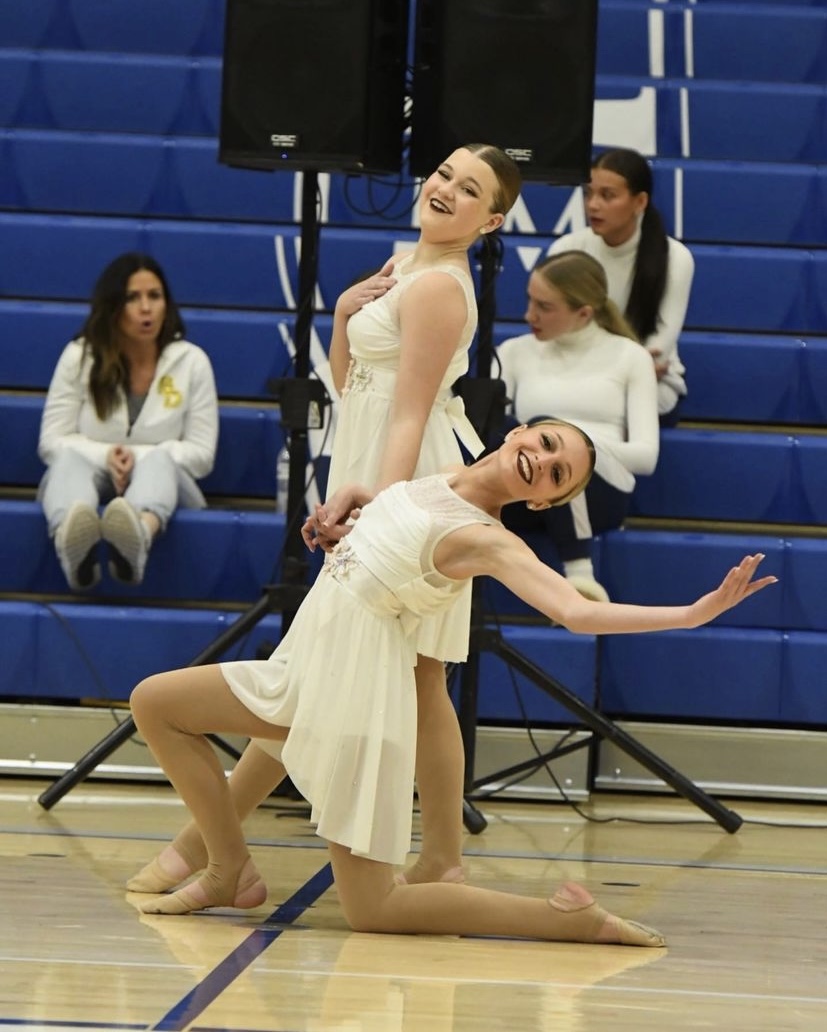OPINION: Dancers should be able to go to college on athletic scholarships
In the world of sports, athletes are often celebrated for their dedication, physical prowess, and countless hours they spend perfecting their craft. Yet, there is a group of individuals who embody these same qualities but are frequently overlooked when it comes to athletic scholarships: dancers.
Dance, much like traditional sports, demands harsh training, exceptional physical fitness, and great commitment toward excellence. Despite this, dancers are rarely afforded the same opportunities for financial support, even though they bring home trophies and national championship titles to school names.
The University of Ohio State is known for their athletic excellence and many accomplishments — they’ve won 13 National Championship Titles and two World Championship Titles! Not to mention, their football team has only won nine championships.
Although the sports differ in many ways, as the athletic program is lucky to have such successful teams, the university doesn’t provide an equal amount of benefits to both teams.
Rachel Wobbe, a University of Miami Ohio dance team alumni and choreographer explains the struggles dancers go through, in comparison to other sports.
“I think dance itself is just a very expensive sport. A lot of sports are expensive but the difference with dance is that we never really get that money and return even at a professional level,” Wobbe stated. “It’s just not enough because although it’s a sport, it’s also an art form and I think art and this economy just don’t go together.”
As athletic scholarships aren’t provided, there are many reasons why such a thing is accepted. Controversy between whether or not dance is a sport has been talked about for a long time.
“In the past, I think we were always viewed as just people on the sidelines at other people’s sporting events and always felt undervalued for the fact that we gave up just as much time if not more than players of other sports and then get nothing in return,” Wobbe explained.
According to The Mustang News Paper, a segment named “Dance as a Colege Sport” states, “Typically, the issue with competitions for college dance teams is funding. It’s an illogical and unfair loop — because dance is not considered an NCAA sport, dance team members receive no athletic benefits or aid, and they are in many cases not eligible for athletic scholarships.”
Although 70% of people classify dance as a sport, it’s not enough to let dancers have a fair shot at finances and athletic scholarships.
With the NCAA not classifying dance as a sport, there is a lack of recognition and opportunities for these athletes. Dancers are considered athletes, but they aren’t able to have the benefits that all other athletes have.
Because not 100% of people see dance as a sport, it’s of general understanding that tying money into it could be a challenge. College dance in specific has elevated how much dance is viewed as a sport and how much dancers are viewed as athletes versus artists. Relating to the topic of the well-known Ohio State Dance Team, they are following a structure as if money is involved.
“College and high school dance teams have really shaped the athlete part of it and I think a bigger part of that comes from those programs like Ohio State, LSU, and those ones that really set the tone for everybody else,” Wobbe states. “Those programs are rare ones who are very supported by their universities because they are these big schools with all of these alumni and these facilities and more money than they know what to do with.”
Overall, the recruitment process for dance has become more competitive and inclusive, reflecting the growing recognition of dance as a serious and valuable discipline in higher education. With more people changing into this mindset, the dance industry will be on the right track, working for the accomplishments that they deserve.

